Ranking the Hall of Fame Classes

Ranking the Hall of Fame Classes
1974
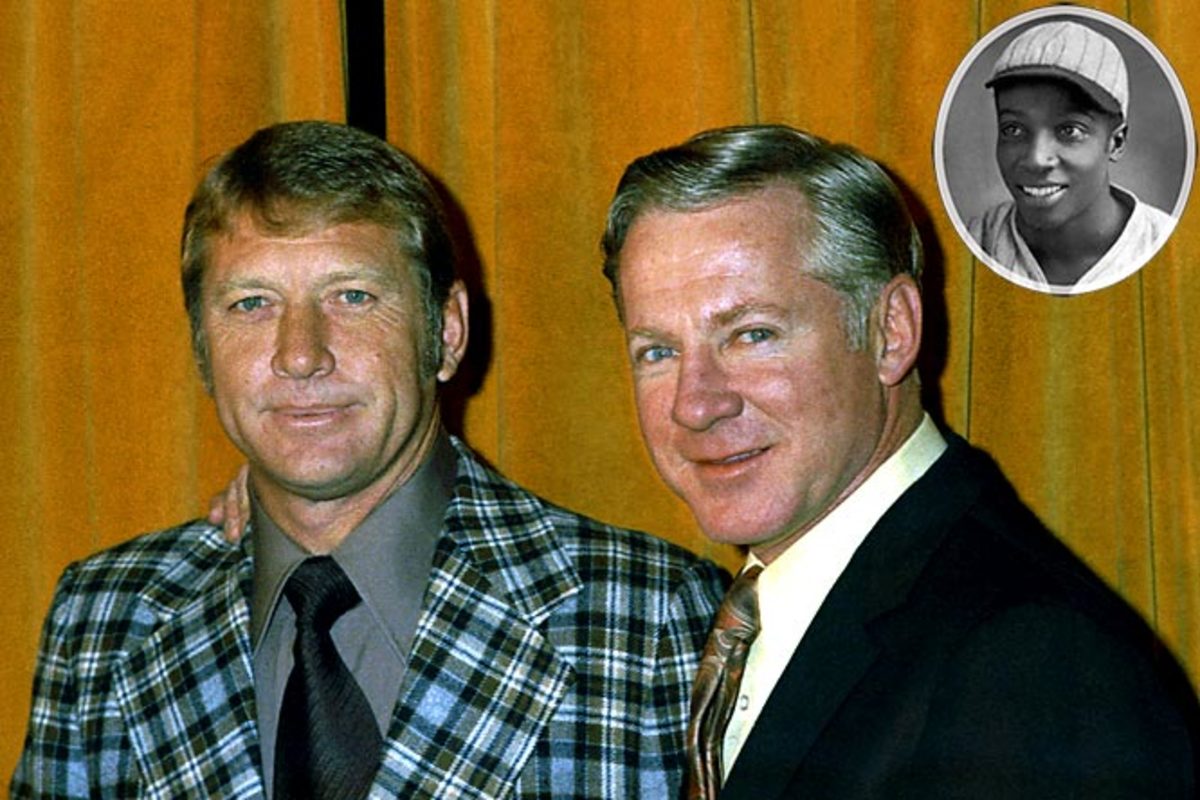
Mickey Mantle (left), Whitey Ford (right), Cool Papa Bell (inset). <i>Not pictured:</i> Sam Thompson, Jim Bottomley, Jocko Conlan. <br><br>In terms of raw production, Mantle was one of the 10 greatest hitters ever and, before injuries destroyed his legs, was also one of the game's greatest athletes. He and Yankee ace Ford won eight World Series and 13 pennants with the Yankees, the last 10 together, with Ford posting the highest regular-season winning percentage in history despite frequently pitching out of rotation against the better teams in the league. Center fielder Bell is among the pantheon of Negro Leaguers and widely regarded as the fastest man ever to play the game.
1951
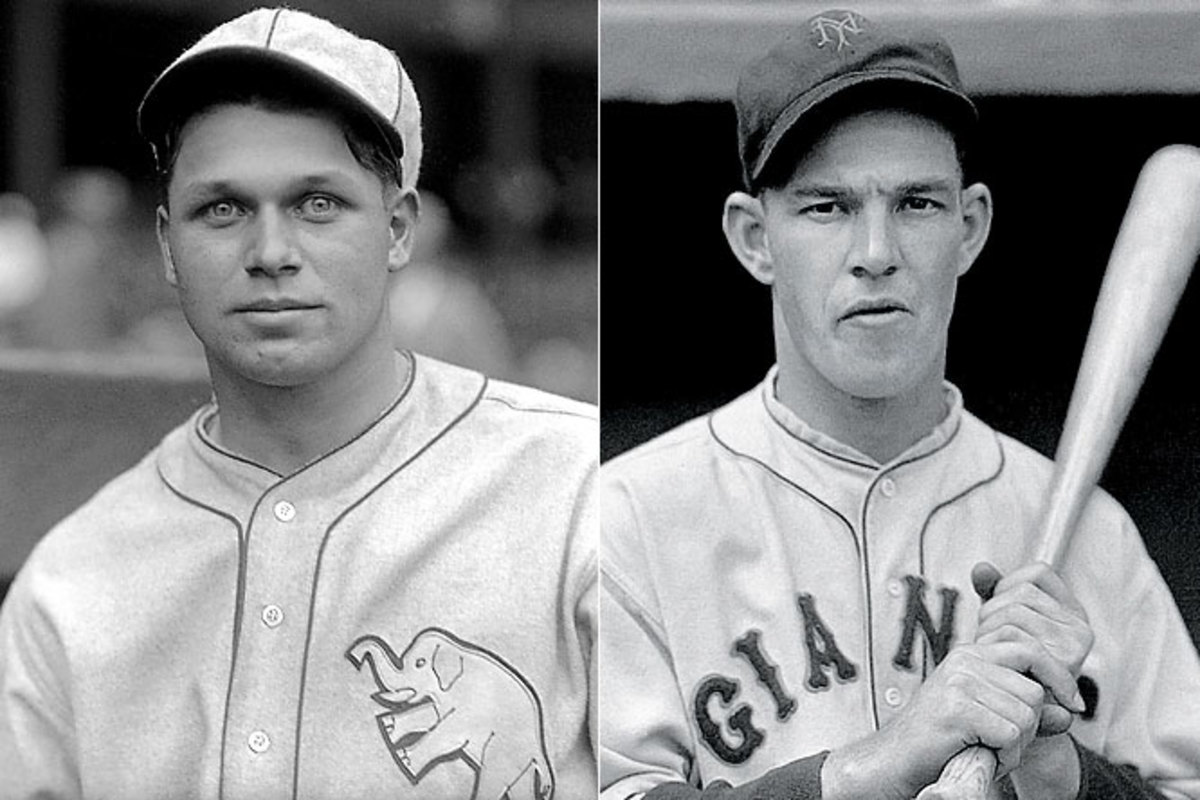
Jimmie Foxx, Mel Ott. <br><br>The greatest two-player class in Hall of Fame history, Foxx and Ott combined for 1,045 career home runs, a figure surpassed by only one other duo (yet to come on this list). Just one other class of any size surpassed Foxx-Ott's homer total; 1980 inductees Al Kaline, Duke Snider and Chuck Klein combined for 1,106 homers, just 61 more than Foxx & Ott.
1999
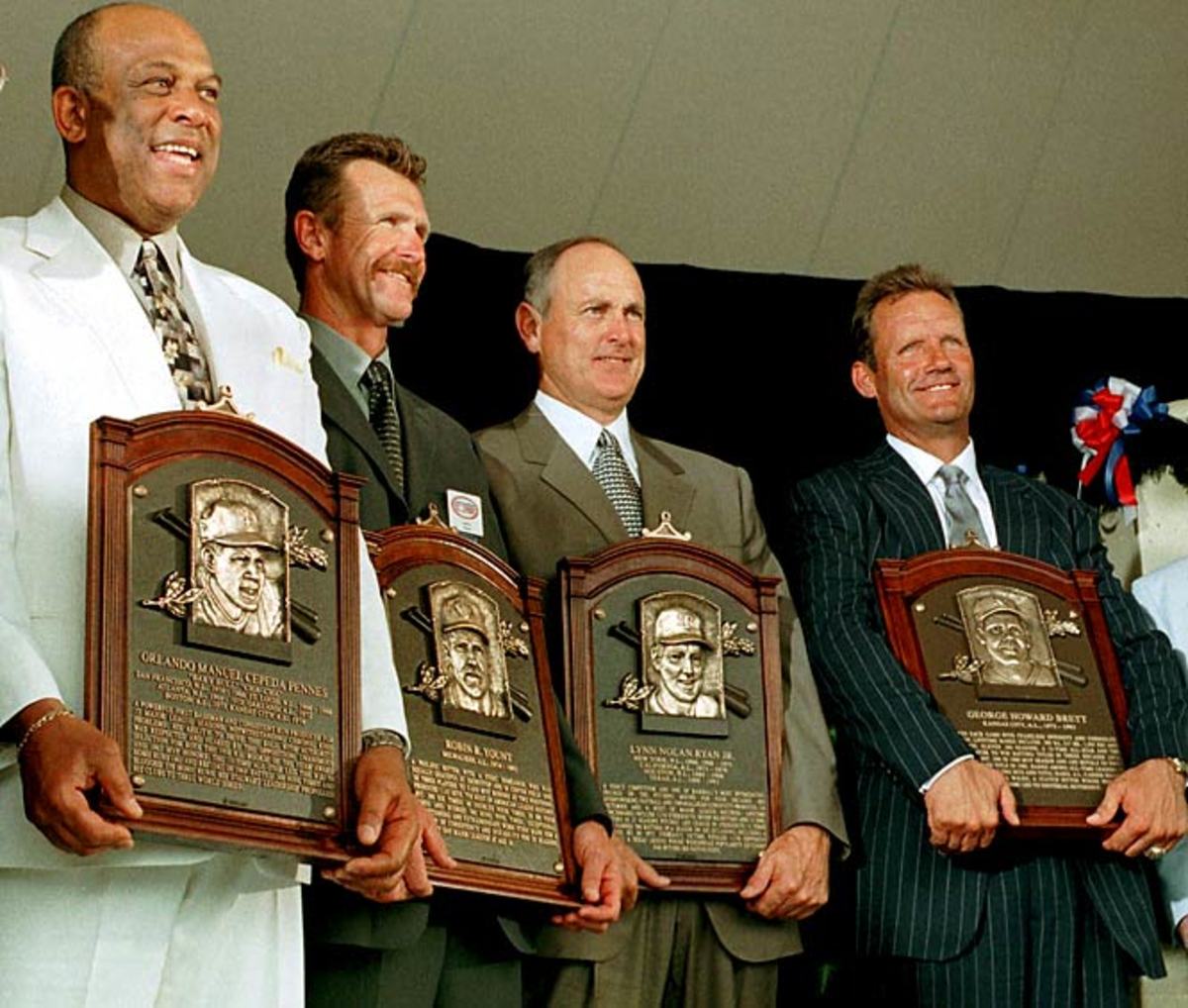
<i>Left to right</i>: Orlando Cepeda, Robin Yount, Nolan Ryan, George Brett. <i>Not pictured:</i> Smokey Joe Willams, Frank Selee, Nestor Chylak, Arch McDonald. <br><br>Brett is one of the five greatest third baseman in the history of the game. Ryan threw seven no-hitters and holds the single-season and career strikeout marks. Yount was a two-time AL MVP who finished with 3,142 hits. Williams, who rivaled Satchel Paige for the title of greatest pitcher in Negro League history, may have been better than all of them.
1972
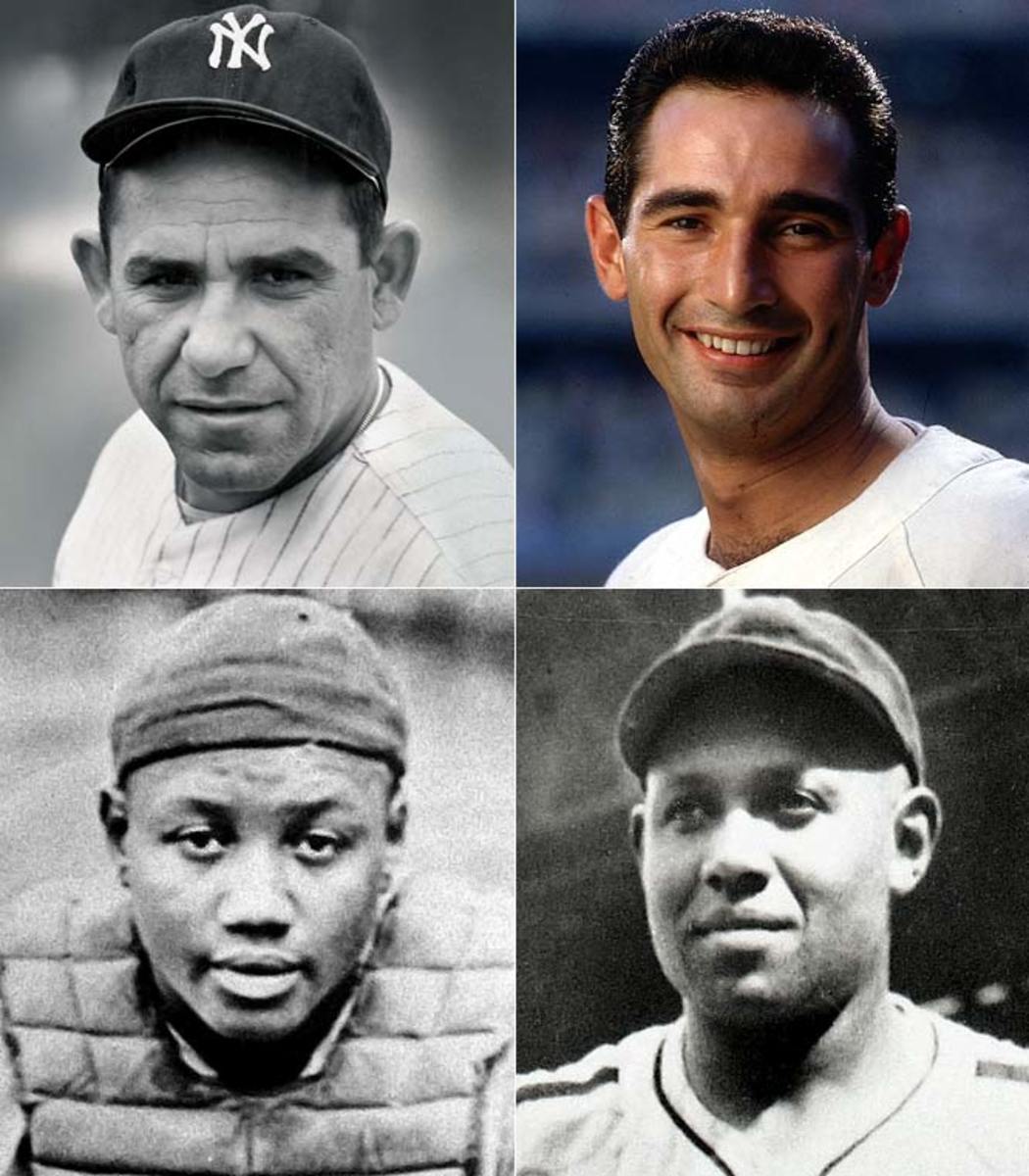
<i>Clockwise from top left:</i> Yogi Berra, Sandy Koufax, Buck Leonard, Josh Gibson. <i>Not pictured:</i> Ross Youngs, Early Wynn, Lefty Gomez, Will Harridge. <br><br>Josh Gibson and Buck Leonard were the Babe Ruth and Lou Gehrig of the Negro Leagues, with Gibson rivaling Ruth for title of the greatest power hitter to ever live. He and Berra give this class the two greatest catchers in baseball history to that point (Johnny Bench was just 24 at the time). In this group, Sandy Koufax's six years of park- and era-assisted dominance and Early Wynn's hard-earned 300 wins are bonuses.
1982
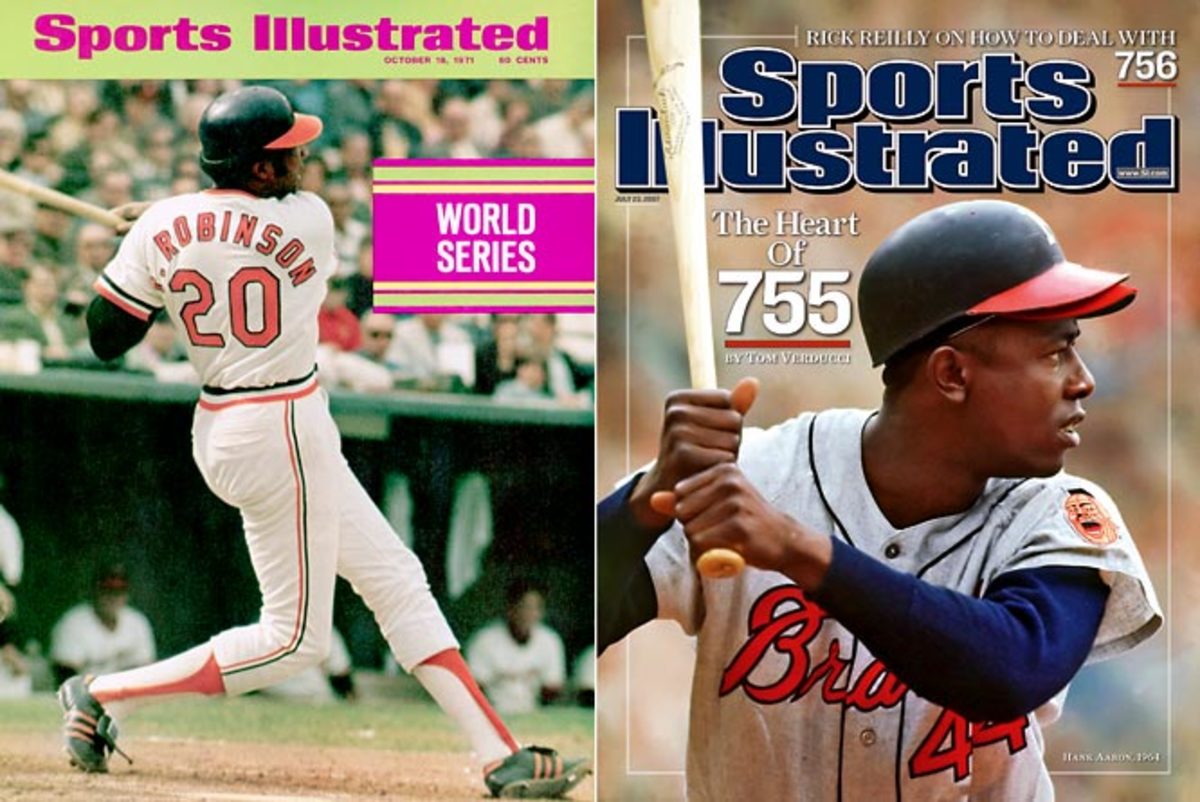
Frank Robinson, Hank Aaron. <i>Not pictured:</i> Travis Jackson, Happy Chandler, Vin Scully. <br><br>Aaron and Robinson were the two most productive hitters of the 1960s, just ahead of the aging Willie Mays and Mickey Mantle. They ranked first and fourth on the all-time home run list in 1982 with 1,341 combined jacks. Aaron retired as the all-time leader in homers, RBIs, total bases, extra-base hits, intentional walks, and was second in runs and hits. Robinson was the second-to-last man to win the triple-crown, the first ever to win the MVP in both leagues, and was the first African American manager in the major leagues. Chandler was the commissioner who approved the Dodgers signing of Jackie Robinson, and Scully may be the greatest play-by-play man in baseball history.
1966
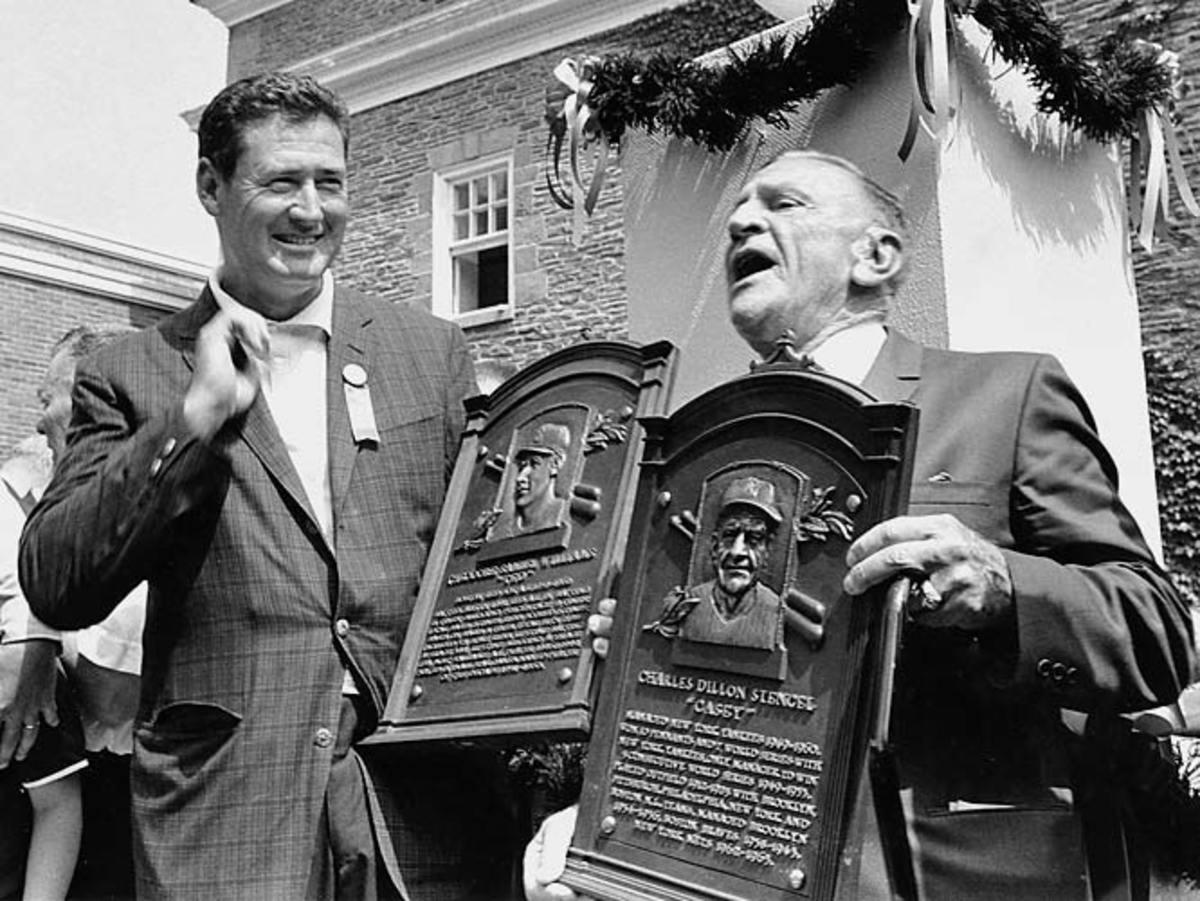
Ted Williams, Casey Stengel. <br><br>Williams wasn't the greatest hitter who ever lived (Ruth was), but he might have been the second best. Along the way, he flew combat missions in two wars, and when he was inducted into the Hall by the press corps he had feuded with throughout his career, he used the occasion to lobby for the inclusion of Negro Leaguers. Stengel was the most successful manager in major league history, winning 10 pennants and seven World Series in a dozen years with the Yankees. He was also one of the game's great characters and the thread that connects the great Orioles teams of the 1890s (via John McGraw) with today's game (via Billy Martin and Lou Piniella).
1947
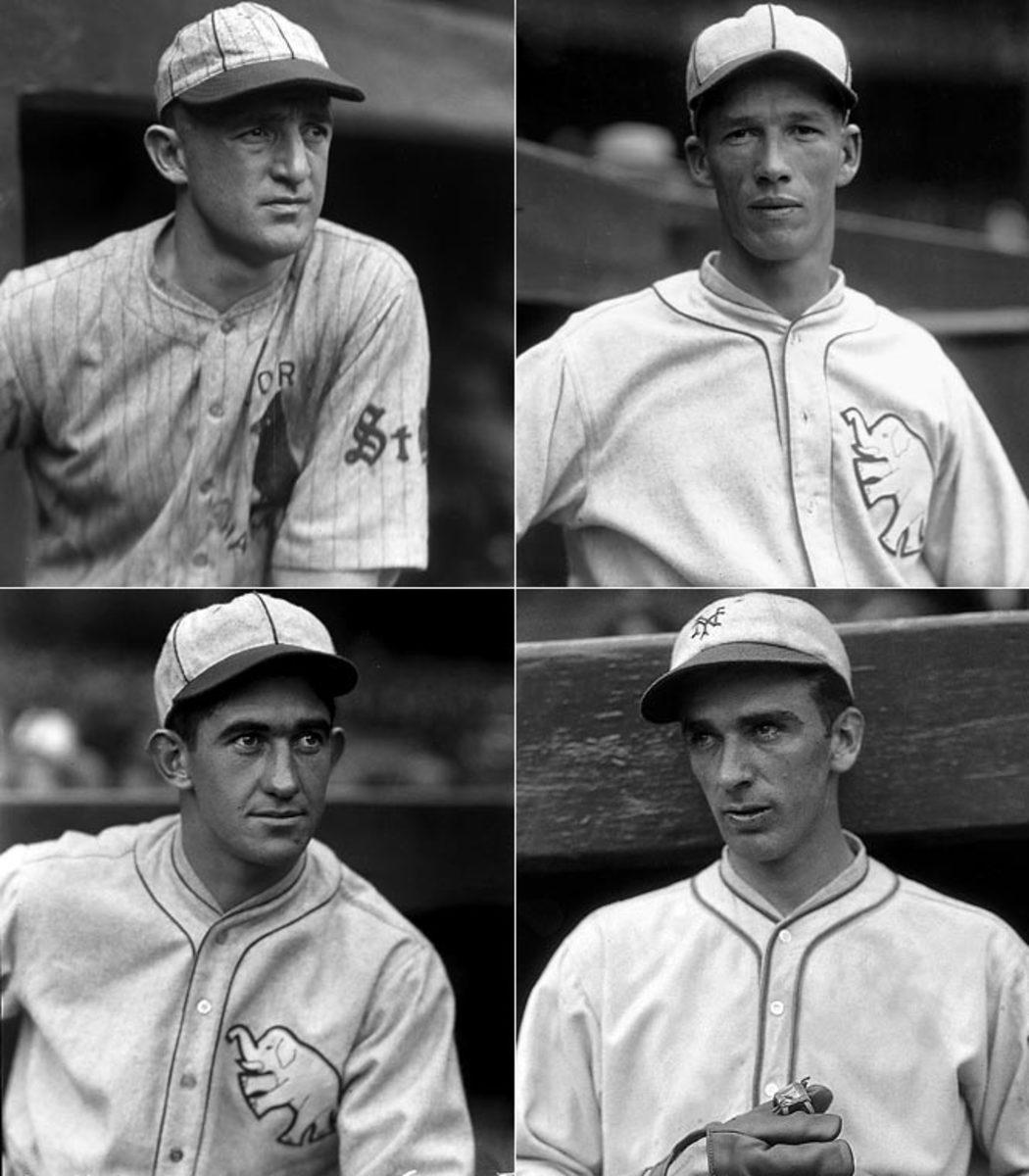
<i>Clockwise from top left:</i> Frankie Frisch, Lefty Grove, Carl Hubbell, Mickey Cochrane. <br><br>From 1940 to 1946 the Baseball Writers Association of America inducted just one player, Rogers Hornsby, into the Hall of Fame. They made up for lost time with this class, which included a candidate for the title of greatest pitcher of all time in Grove, the greatest catcher of the pre-World War II era in Cochrane, and two other thoroughly deserving candidates in keystone great Frisch, an eight-time pennant winner with John McGraw's Giants and the Gas House Cardinals, and screwball master Hubbell who dominated in the hitting-heavy 1930s.
1939
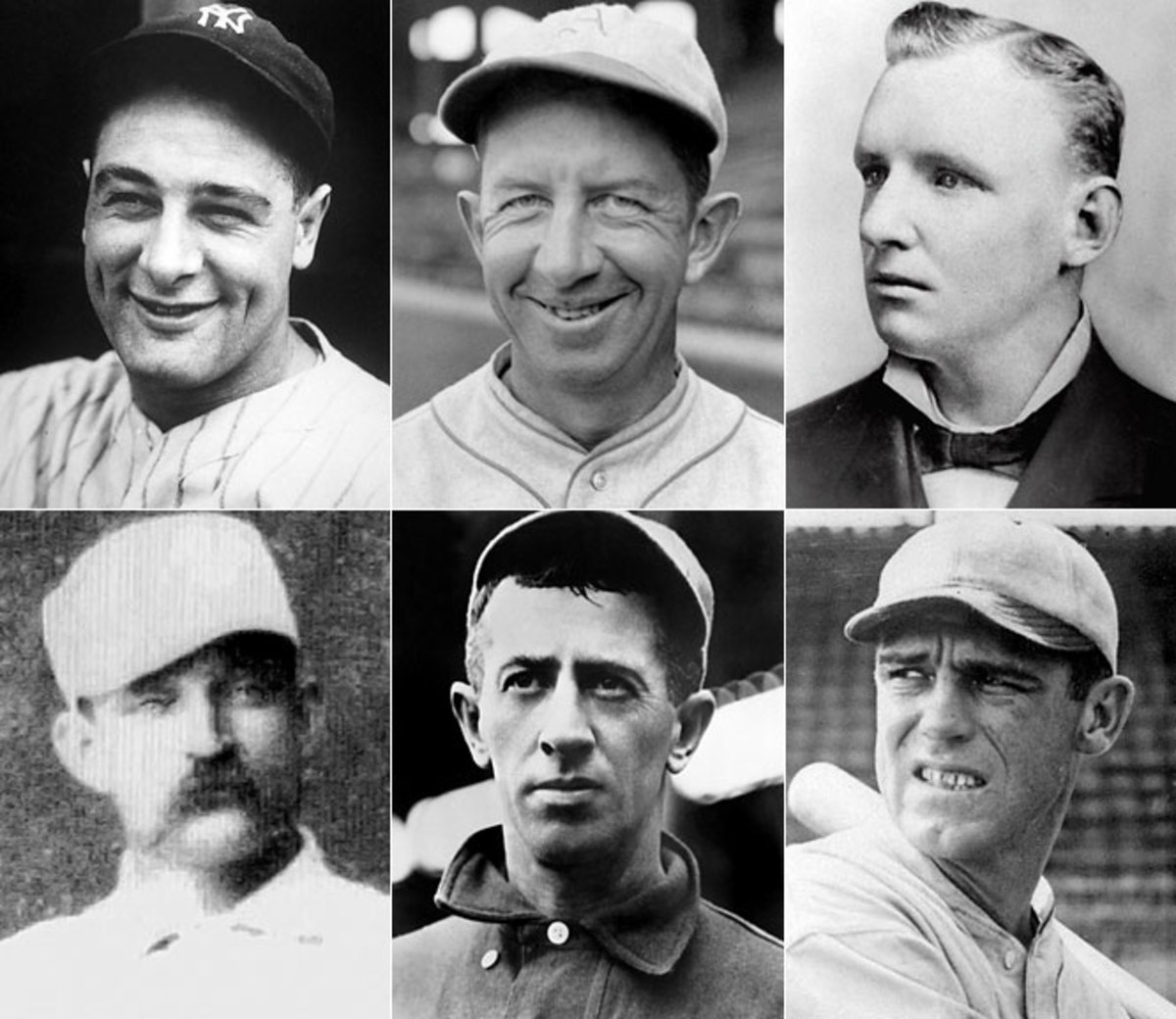
<i>Clockwise from top left:</i> Lou Gehrig, Eddie Collins, Cap Anson, George Sisler, Willie Keeler, Old Hoss Radbourn. <i>Not pictured:</i> Buck Ewing, Candy Cummings, Albert Goodwill Spalding, Charlie Comiskey. <br><br>The initial effort to fill the Hall concluded with this class led by the just-retired Gehrig, the greatest first baseman of all time, and Collins, still in the argument over the greatest second baseman of all time. As a player, manager, owner, publisher, historian, barnstormer, and sporting goods magnate, Spalding was one of the game's seminal figures. On the down side, Cap Anson was one of the National League's first stars but also instrumental in drawing baseball's color line, Comiskey's miserly ways as White Sox owner set the stage for the fixing of the 1919 World Series, and Cummings was included solely on the basis of the dubious claim that he invented the curveball. The cherry on top is 1880s workhorse Charles "Old Hoss" Radbourn, whose entire 11-year career looks like a misprint.
1937
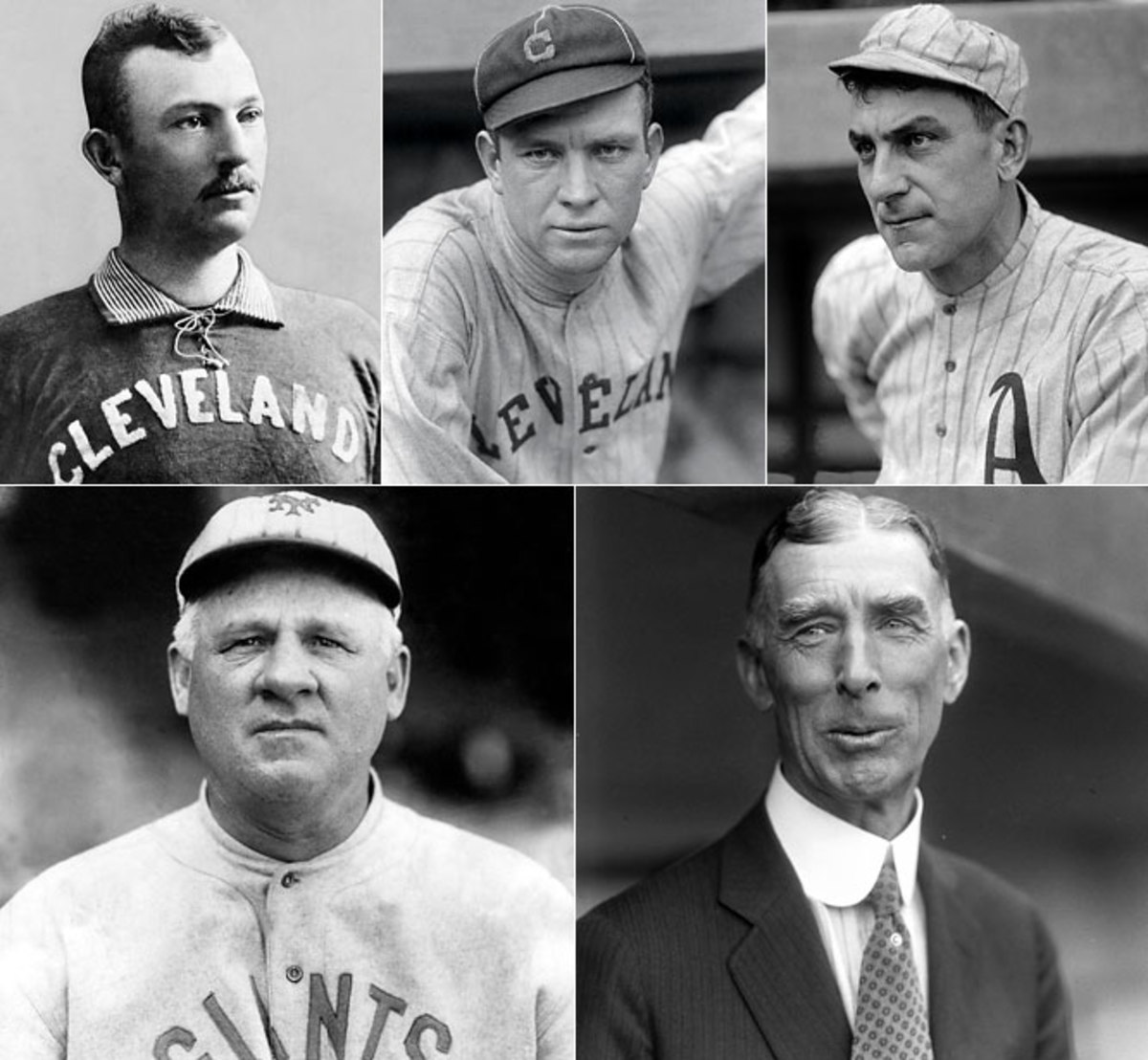
<i>Clockwise from top left:</i> Cy Young, Tris Speaker, Nap Lajoie, Connie Mack, John McGraw. <i>Not pictured:</i> Ban Johnson, George Wright, Morgan Bulkeley. <br><br> The two winningest mangers in baseball history, Mack and McGraw dominated the first half of the 20th century and their impact on the game still resonates. Cy Young's 511 career wins are baseball's most untouchable record. Ban Johnson founded the American League and helped establish its signature franchise in New York. George Wright was pro ball's first star as an outfielder with the 1869 Red Stockings. Tris Speaker is fifth on the all-time hit list and among the five greatest center fielders in the game's history. Lajoie has similar stature among the game's second basemen. Bulkeley was the NL's first president and is out of his depth here.
1936
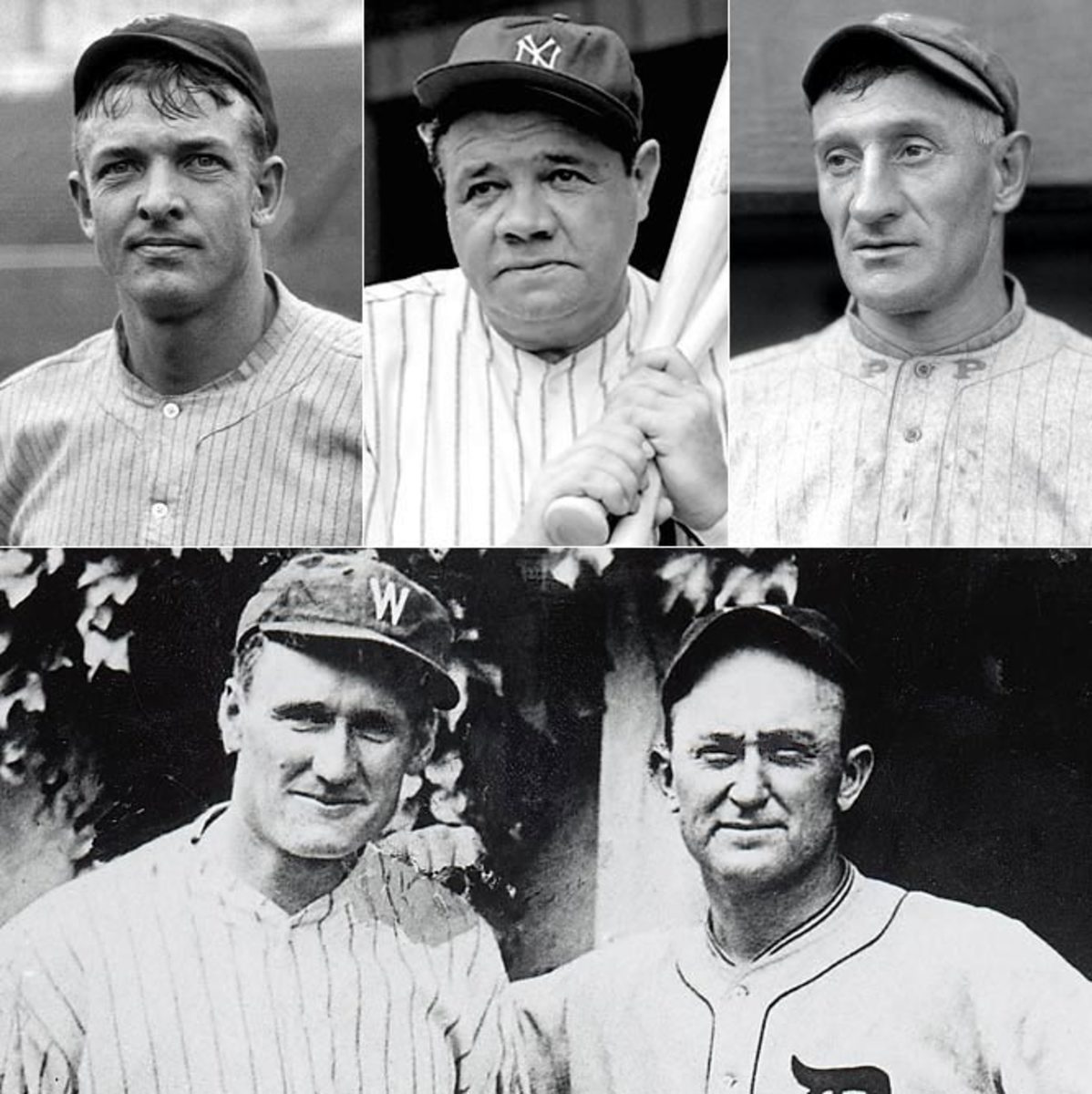
<i>Clockwise from top left:</i> Christy Mathewson, Babe Ruth, Honus Wagner, Ty Cobb, Walter Johnson. <br><br>The inaugural Hall of Fame class included the greatest player in baseball history (Ruth) and the two players who vied for the title before Ruth's arrival -- Wagner, the greatest shortstop in baseball history, and Cobb, once the all-time hits and stolen bases leader -- arguably the greatest pitcher in baseball history (Johnson), and Christy Mathewson, a man of great character and intelligence who won 372 games but was merely the fifth greatest player in this group. This is baseball's Mount Rushmore.
